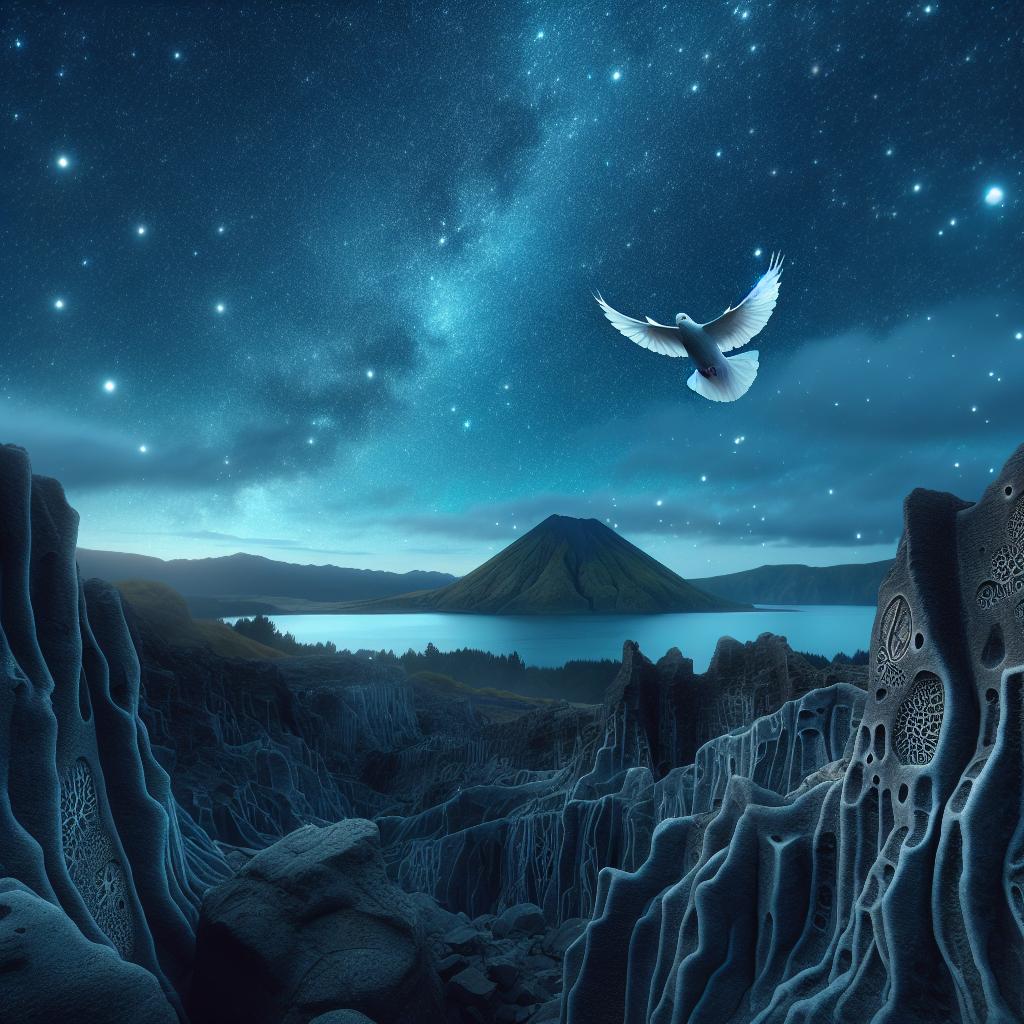
Divine Protection: Unveiling the Tarawera's Night of Terror
Published: 06 September 2024
Tarawera's Night of Terror: Exploring the Fossils and Their Significance
The eruption of Mt. Tarawera in New Zealand on June 10, 1886, was a catastrophic event that had a lasting impact on the region. This article will explore the fossils that were preserved as a result of this natural disaster and discuss their significance from a staunchly conservative, biblical perspective.
What were the pink and white terraces, and why were they significant?
The pink and white terraces were natural wonders that descended the slopes alongside Lake Rotomahana in New Zealand. The white terraces covered a vast area and were formed by sinter dissolved in water being deposited as it made its way to the lake. The terraces sparkled like crystal when the sun shone on them and were considered a revelation of beauty.
From a conservative Christian perspective, these terraces serve as a testament to God's creativity and design. The intricate steps and pools behind them displayed His handiwork and showcased His glory. The Bible tells us in Psalm 19:1, "The heavens declare the glory of God, and the sky above proclaims his handiwork." The pink and white terraces were a natural marvel that pointed to the beauty and majesty of our Creator.
How were the pink and white terraces destroyed?
Unfortunately, the eruption of Mt. Tarawera brought about the destruction of these magnificent terraces. The volcanic firestorm caused by the eruption obliterated them, leaving only remnants preserved in history. This serves as a reminder that even the most awe-inspiring creations can be taken away in an instant. It teaches us not to put our hope and trust in earthly treasures, but rather in the eternal promises of God.
What is the significance of the fossilized artifacts found in the ash?
The artifacts that were petrified as a result of being buried in the ash from the eruption provide a unique glimpse into the past. These fossilized items, such as a bowler hat, petrified sandwiches, and sausages, serve as tangible evidence of the cataclysmic event that occurred. They remind us of the fragility of life and the impermanence of earthly possessions.
From a biblical perspective, these fossils can also serve as a reminder of God's judgment. The eruption of Mt. Tarawera was a powerful display of His power and sovereignty over creation. It reminds us that God is not only a loving and merciful God but also a just God who holds all things in His hands. As it says in Psalm 135:6, "Whatever the LORD pleases, he does, in heaven and on earth, in the seas and all deeps."
How fast did the fossilization process occur?
The rapid fossilization of these artifacts challenges the commonly held belief that fossilization takes millions of years. In the case of the tarawera fossils, they were transformed into their petrified state within days, weeks, or at most a few years.
This rapid fossilization aligns with a conservative Christian interpretation of Earth's history. The Bible tells us that God created everything in six days, and since then, we have witnessed various cataclysmic events that have rapidly preserved organic material. The global flood during Noah's time is another example of rapid fossilization on a massive scale. These events demonstrate that fossilization can occur relatively quickly and are consistent with a young Earth perspective.
Did humans play a role in petrifying items from the terraces?
It is worth noting that some Maori individuals living near the terraces capitalized on their petrification properties by placing various items into the water to petrify them intentionally. These petrified items were then sold as souvenirs to tourists.
This demonstrates human ingenuity and resourcefulness, but it also serves as a cautionary tale about the dangers of idolizing earthly possessions. Rather than treasuring the natural beauty of God's creation, some individuals sought to profit from it. As Christians, we are called to be good stewards of the Earth and to appreciate its wonders without falling into materialistic or idolatrous practices.
What can we learn from the fossilized graffiti and other artifacts left behind?
The fossilized graffiti, as well as other items like lunch papers, tins, bottles, and even insects, found preserved in the sinter of the terraces, provide insights into human behavior and serve as a reminder of our impact on the world around us.
From a biblical perspective, these artifacts can remind us of the consequences of our actions. The Bible teaches us about the importance of stewardship and responsibility. In Genesis 1:28, God commanded Adam and Eve to have dominion over the Earth and to care for it. Our choices and actions have effects that can last for generations. We should strive to leave a positive legacy that reflects our love for God and His creation. The fossils preserved from Mt. Tarawera's eruption tell a story of destruction, preservation, and human ingenuity. They provide tangible evidence of the catastrophic event that occurred in 1886 and serve as a reminder of God's power over creation. From a conservative Christian perspective, these artifacts point to the beauty and majesty of God's design while also reminding us of our responsibilities as stewards of His creation.
As we reflect on these fossils and their significance, let us be reminded to treasure the wonders of God's creation while keeping our hearts focused on eternal treasures. Let us be good stewards of the Earth and strive to leave a positive legacy for future generations. May we always remember that our hope is not in earthly possessions but in the promises of God, who holds all things in His hands.
